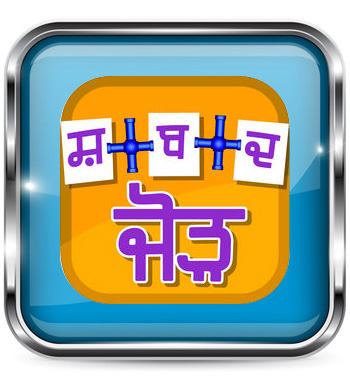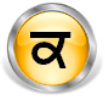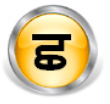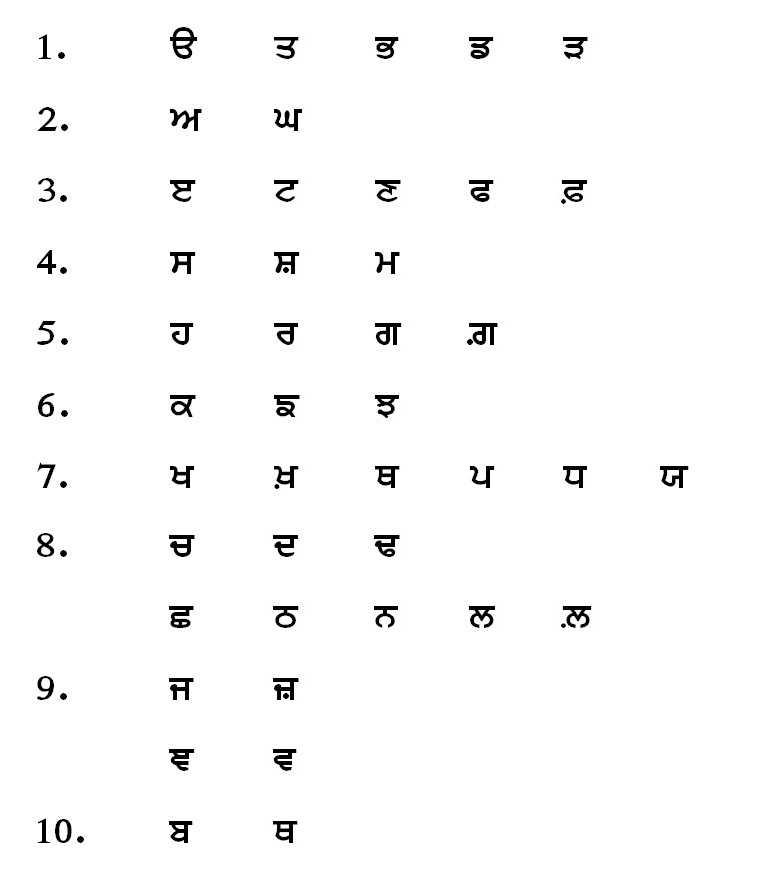












Il punjabi è una lingua
intercontinentale. Le persone che parlano il punjabi sono sparse in tutto il mondo. Questa lingua è
legata al gruppo indo-ariano che è legato alla famiglia linguistica indoeuropea. La caratteristica
distintiva della lingua Punjabi è che questo è un linguaggio tonale. Ci sono tre toni usati in
questa lingua. Questi sono chiamati tono basso (tono discendente), mezzitoni (tono di livello) e
tono alto (tono ascendente). Il Punjabi è ampiamente parlato nel Punjab indiano, noto come Punjab
orientale e nel Punjab pakistano, noto come Punjab occidentale. Il Punjabi è scritto in Gurumukhi in
India e in Shahmukhi (Perso-Arabo) in Pakistan. Questa è la lingua principale della comunità sikh
dell'India e parlata come prima lingua dalla popolazione del Punjab indiano per quanto riguarda la
popolazione del Pakistan.
Questa è la seconda lingua più parlata nel Regno Unito e la terza più parlata nell'Asia meridionale.
Questa lingua ha ottenuto lo status di terza lingua in Canada. Tranne questo, il Punjabi è parlato
in Stati Uniti d'America, Emirati Arabi, Arabia Saudita, Sud Africa, Malesia, Francia, Myanmar,
Italia, Giappone, Tailandia, Australia, Singapore, Mauritius, Oman, Libia, Bahrain, Kenya, Tanzania,
Kuwait, Germania e Hong Kong. Il punjabi è una delle lingue riconosciute dalla costituzione indiana.
È una delle 22 lingue con status ufficiale in India.
Questo è più importante che la Sacra Scrittura del Sikh "Guru Granth Sahib" sia scritta in questa
lingua. La parola Punjab è composta da due parole Punj e ab. La parola "Punj" significa cinque e ab
significa acqua. Quindi il significato di cinque acque è letteralmente noto come la terra di cinque
fiumi. Questi cinque fiumi sono conosciuti come Sutlej, Beas, Jehlam, Ravi e Chenab che sono gli
affluenti del fiume Indo. In India, il Punjabi ha ottenuto il secondo status linguistico negli stati
confinanti come Haryana, Himachal Pradesh e Delhi, la capitale dell'India. La lingua Punjabi è
emersa come una lingua indipendente nel 12 ° secolo. Baba Sheikh Farid è conosciuto come il primo
poeta della lingua punjabi. Il punjabi sta diventando più popolare nei media moderni e nel cinema
indiano di Bollywood.
 |
 |
 |
 |
 |
 |
 |
 |
 |
 |
 |
 |
 |
 |
 |
 |
 |
 |
 |
 |
 |
 |
 |
 |
 |
 |
 |
 |
 |
 |
 |
 |
 |
 |
 |
 |
 |
 |
 |
 |
The recognition of the letter is more essential, the learners are advised to identify the letter properly. The grouping of letters is given, every letter has its own shape. As the letters are made with different lines, strokes, curves, there are similarities in the letters. With the addition of one & two lines and with one dot the letters become different from each other. the grouping of the letters helps the learners for the recognition of the letters.

The speech sounds of a language can be classified into two categories, segmental &
super-segmental sounds. The segmental sounds are further divided into two classes, vowels &
consonants. The super segmental sounds are classified into stress, tone & intonation. In this part
of the course, the vowels & consonants are classified.
There are three basic vowels in Gurmukhi Script. These are  . The matras are used with these three
letters. After the usage of matras these letters become ten in number. With in these three
. The matras are used with these three
letters. After the usage of matras these letters become ten in number. With in these three  and
and
 letters are not used in this form. Only
letters are not used in this form. Only  can occur
independently.
can occur
independently. and
and  occur with the usage of matras.
The matras are used with these three letters as follows.
occur with the usage of matras.
The matras are used with these three letters as follows.

|

|

|
|

|

|

|

|

|

|

|


After the classification of vowel sounds the consonant
sounds are classified. These sounds are classified as velars, affricates, retroflexs, dentals,
bilabials, nasals, frictionless continuants, trill, flap, laterals, fricatives & glottal
The consonant /s/ਸ  is called the
alveolar fricative. The blade of the tongue approaches the teeth
ridge leaving a narrow passage. The air squeezes out with friction. In the production of /h/ਹ
is called the
alveolar fricative. The blade of the tongue approaches the teeth
ridge leaving a narrow passage. The air squeezes out with friction. In the production of /h/ਹ consonant, the air passes with a friction in the glottal region. This is called glottal
fricative.
consonant, the air passes with a friction in the glottal region. This is called glottal
fricative.
In Gurumukhi script, the consonants / K, Kh, g/ਗ /ਕ
/ਕ , ਖ
, ਖ , ਗ
, ਗ  are velar sounds. In the production of
these sounds, the back part of the tongue touches the soft palate. After releasing the contact, the
air comes out with plosion. The consonants /c, ch, j/ ਚ
are velar sounds. In the production of
these sounds, the back part of the tongue touches the soft palate. After releasing the contact, the
air comes out with plosion. The consonants /c, ch, j/ ਚ  ,ਛ
,ਛ ,ਜ
,ਜ are palato-alveolar affricates. The
front part of the tongue touches between the teeth ridge and the hard palate. The consonants , th,
ਟ
are palato-alveolar affricates. The
front part of the tongue touches between the teeth ridge and the hard palate. The consonants , th,
ਟ ,ਠ
,ਠ  ,ਡ
,ਡ  are retroflex
sounds. In the production of these sounds, the tip of the tongue called back and
touches to the hard palate. The consonants like /t, th, d/ਤ
are retroflex
sounds. In the production of these sounds, the tip of the tongue called back and
touches to the hard palate. The consonants like /t, th, d/ਤ  , ਥ
, ਥ  , ਦ
, ਦ are dental sounds. The tip of
tongue touches to the back part of the teeth. When the consonants /p, ph, b/ਪ
are dental sounds. The tip of
tongue touches to the back part of the teeth. When the consonants /p, ph, b/ਪ  , ਫ
, ਫ , ਬ
, ਬ are produced,
the lips are brought together into contact. These are called bilabial sounds. The sounds , ñ, n, ,
/ ਙ
are produced,
the lips are brought together into contact. These are called bilabial sounds. The sounds , ñ, n, ,
/ ਙ ,ਞ
,ਞ  ,ਣ
,ਣ  ,ਨ
,ਨ ,ਮ
,ਮ are called velar nasal, palatal nasal, retroflex nasal, dental nasal and
bilabial nasal
respectively.
are called velar nasal, palatal nasal, retroflex nasal, dental nasal and
bilabial nasal
respectively.
In the production of y/ਯ , the front part of
the tongue raises towards the hard palate. This is
called palatal frictionless continuant. In the production of /r/ਰ
, the front part of
the tongue raises towards the hard palate. This is
called palatal frictionless continuant. In the production of /r/ਰ  , the tip of the tongue approaches
towards the alveolar ridge and taps. This is called alveolar trill sound. The /l/ਲ
, the tip of the tongue approaches
towards the alveolar ridge and taps. This is called alveolar trill sound. The /l/ਲ  consonant is a
lateral sound. The front part of the tongue touches the back of the upper teeth. The air comes out
by the sides of the tongue. The sound /v/ਵ
consonant is a
lateral sound. The front part of the tongue touches the back of the upper teeth. The air comes out
by the sides of the tongue. The sound /v/ਵ  is called labio-dental. In the production of this sound,
the lower teeth touches to the upper lip. The sound /r/ੜ is called Flap. In the production of this
sound, the tip of the tongue curls back and approaches the hard palate but does not make a contact.
In the production of /sh/ਸ਼
is called labio-dental. In the production of this sound,
the lower teeth touches to the upper lip. The sound /r/ੜ is called Flap. In the production of this
sound, the tip of the tongue curls back and approaches the hard palate but does not make a contact.
In the production of /sh/ਸ਼  , the front part
of the tongue is raised towards the hard palate leaving
a narrow passage. The air comes out with friction. This is called palato-alveolar fricative.
, the front part
of the tongue is raised towards the hard palate leaving
a narrow passage. The air comes out with friction. This is called palato-alveolar fricative.
The sound /x/ਖ਼  is called velar fricative.
The back part of the tongue is raised towards the soft
palate. In the production of /g/ਗ਼
is called velar fricative.
The back part of the tongue is raised towards the soft
palate. In the production of /g/ਗ਼  the back
part of tongue is raised towards the soft palate. This
sound is also called velar fricative. In the production of /z/ਜ਼
the back
part of tongue is raised towards the soft palate. This
sound is also called velar fricative. In the production of /z/ਜ਼  , the blade of the tongue approaches
the teeth ridge. The air passes through the narrow passage with friction. This is called alvealor
fricative. While producing /f/ਫ਼
, the blade of the tongue approaches
the teeth ridge. The air passes through the narrow passage with friction. This is called alvealor
fricative. While producing /f/ਫ਼  the lower
lip approaches the upper teeth. The air comes out with
friction. This sound is called labio-dental fricative. In the production of /l/ਲ਼
the lower
lip approaches the upper teeth. The air comes out with
friction. This sound is called labio-dental fricative. In the production of /l/ਲ਼  sound the tip of
the tongue curls back and touches the hard palate. The air passes by the sides of tongue. This is
called retroflex lateral.
sound the tip of
the tongue curls back and touches the hard palate. The air passes by the sides of tongue. This is
called retroflex lateral.
 |
 |
 |
 |
 |
 |
 |
 |
 |
 |
 |
 |
 |
 |
 |
 |
 |
 |
 |
 |
 |
 |
 |
 |
 |
 |
 |
 |
 |
 |
 |
 |
 |
 |
 |
 |
 |
 |
 |
 |
In the Gurmukhi script, there are three basic vowels / ʊ ə I / A e. With in these vowels only /ə/ can occur in this form in the word. The remaining two letters / ʊ / and / I / always occur with the vowel signs which are also called matras. There are nine matras which are used with the three basic vowels. With the use of these matras, the vowels are made ten in number. These matras are called Kanna (), Sihari (), Bihari () , Aunkar (), Dulainkar (), Lavan (), Dulavan (), Hora () & Kanaura (). One matra is used before the letter. The two matras are used after the letters. Four are used above and two are used below the letters. The matra Sihari is used before the letter. Kanna & Bihari is used after the letters. The four matras Lavan, Dulavan, Hora & Kanaura are used above the letters and two matras Aunkar & Dulainkar are used below the letters. These two matras Aunkar & Dulainkar are used below the letter like & / ʊ & u / and it is open from the upper side it becomes /o/. The second vowel of the Gurumukhi script is /ə/. It is also called mukta. This vowel is not indicated by any sign. The three matras Kanna, dulavan and Kanaura are used with /ə/. Kanna is used after this letter. The remaining two matras Dulavan and Kanaura are used above this letter. The three matras are used with the third basic vowel /I/. These matras are Sihari, Bihari & Lavan. Sihari is used before this letter, Bihari is used after this letter and Lavan is used above this letter. The ten vowels of Punjabi are mentioned here. are used in this form when these vowels come in the initial position of the words or they are used with another vowel. When the vowels are used with the consonants then only their matras are used.


The Accessory signs which are used after matra are called lagakhar. These are three in Gurmukhi Script
.jpg)
Bindi is that symbol which indicates nasalization. It is used with all vowels along with Mukta, Sihari, Aunkar









.jpg)
Tippi is that symbol which also indicates nasalization. It is used with all vowels along with Mukta, Sihari, Oankar, Dulankar.









.jpg)
Adhak is that symbol which doubles the consonants before which it appears. Adhak doubles the sounds and even changes the meaning of a word.








.jpg)
When there is no vowels sound between ਰ, ਹ and ਵ as second members of a cluster are written conjunctly ਅੱਖਰ Foot words ex,






In this section of the programme word formation is given. The words are made with the combination of the letters. The following words are made with two letters, three letters & four letters. The word meaning is given in English




.jpg)
.jpg)
.jpg)
.jpg)
.jpg)
.jpg)


.jpg)
.jpg)




.jpg)
.jpg)






























